George Nakashima’s Estate
On his estate in Pennsylvania, the architect and woodworker erected buildings that blend the international style with Japanese architecture.
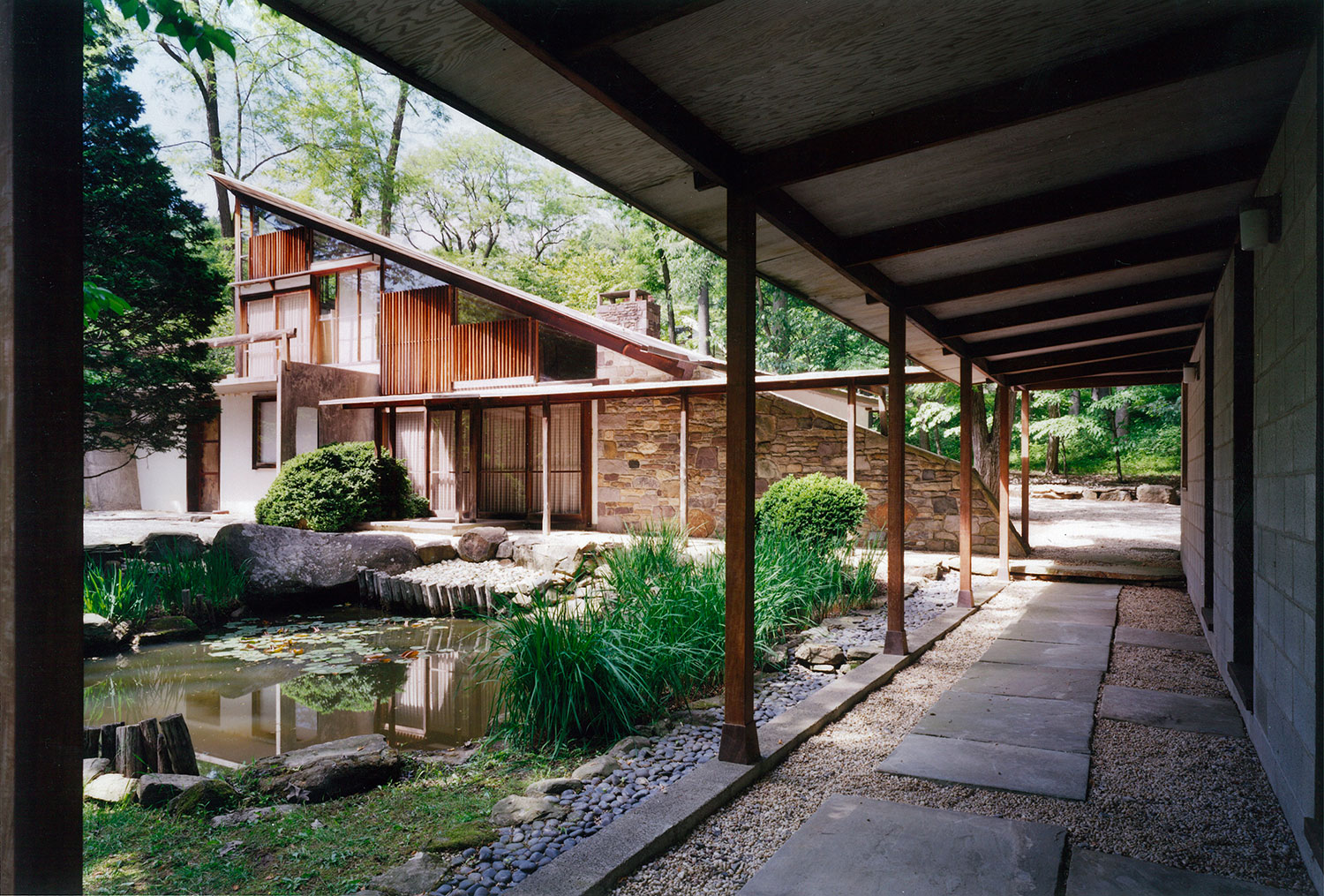
Arts Building and Cloister © George Nakashima
Spread across a five-hectare plot of land where vast green lawns are surrounded by a forest, the 21 buildings conceived, designed, and furnished by George Nakashima condense, in the heart of New Hope in Pennsylvania, the spirit and influences of this individual whose work made a significant mark on the mid-20th century.
Born in Washington in 1905 into a family descended from samurai, George Nakashima started out studying silviculture and architecture before attending the Fontainebleau American School of Fine Arts. His time in France was marked by his visit to Chartres Cathedral and Le Corbusier’s Swiss Pavilion in Paris, which would influence his style. Although he began his career as an architect-designer in the United States, George Nakashima moved to Japan in 1934, where he trained in traditional Japanese architecture before crossing back over the Pacific to make the leap into furniture design, notably collaborating with Knoll. During this period, his style asserted itself, with delicate lines coupled with the use of high-quality materials.
The landscape and architecture in symbiosis
In 1946, the architect and designer began working on the construction of his estate in Pennsylvania, which at the time comprised only a house and a workshop. Ten years later, as his influence was growing and his architectural and woodworking firm was flourishing, George Nakashima started to create a showroom, a finishing room, and another dedicated to chair manufacture. The estate achieved its definitive form in the 1970s, with the addition of a reception house, a cloister, an arts building, and a pool house.
The buildings reflect the architect’s multiple influences. He was inspired by the international style, a movement that combines the teachings of the Bauhaus from Germany with the technical nature of the use of glass, steel, and concrete specific to the United States. George Nakashima was also strongly marked by traditional Japanese architecture, which uses natural materials in a more raw form. The 21 buildings that make up the Nakashima estate are therefore made from wood, local stone, or white stucco. The interior is flooded with light thanks to the ribbon windows and large glass walls.
The estate is infused with the philosophy of George Nakashima, for whom architecture, furnishings, and the landscape had to be juxtaposed in an almost symbiotic manner. He inherited this tendency from his history and its intermingling of the United States, Japan, India, and France. Following his death in 1990, his daughter Mira took over the reins of the estate, where the George Nakashima Woodworkers’ studio continues to design furniture, perpetuating the artist’s philosophy and aesthetic. The property can be visited by appointment.
More information about George Nakashima’s estate and George Nakashima Woodworkers can be found on the company’s website.
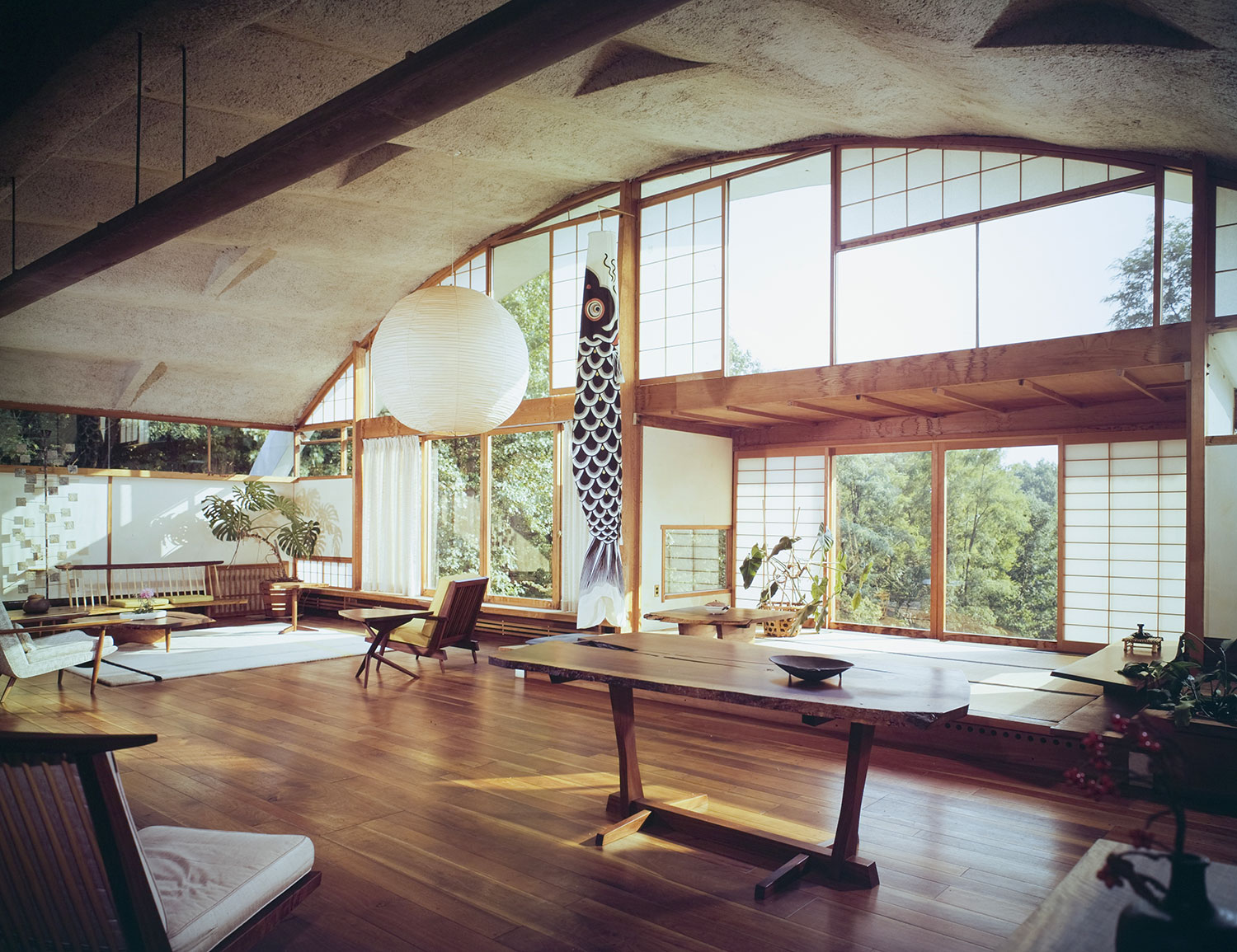
© Georges Nakashima
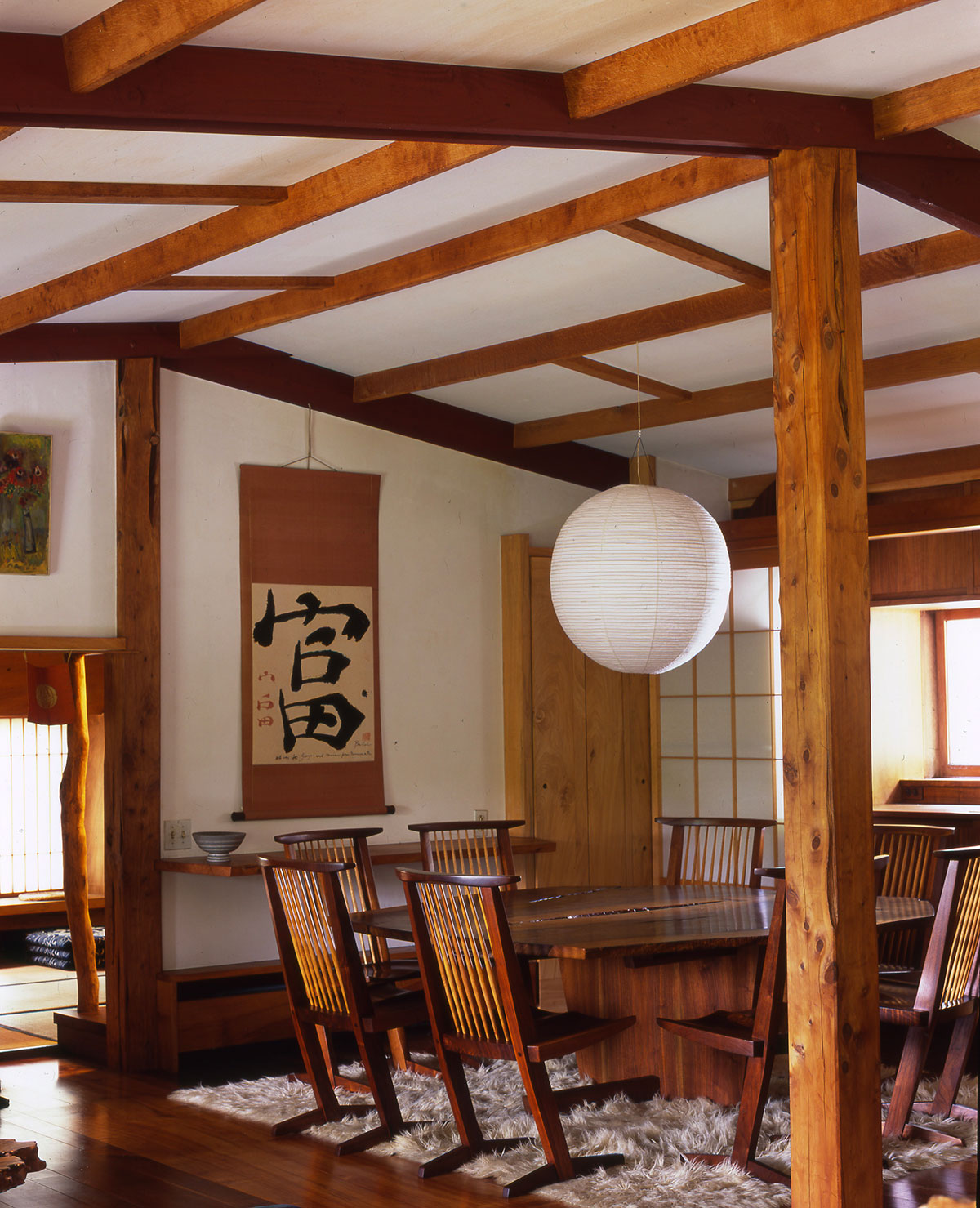
Reception House © Georges Nakashima
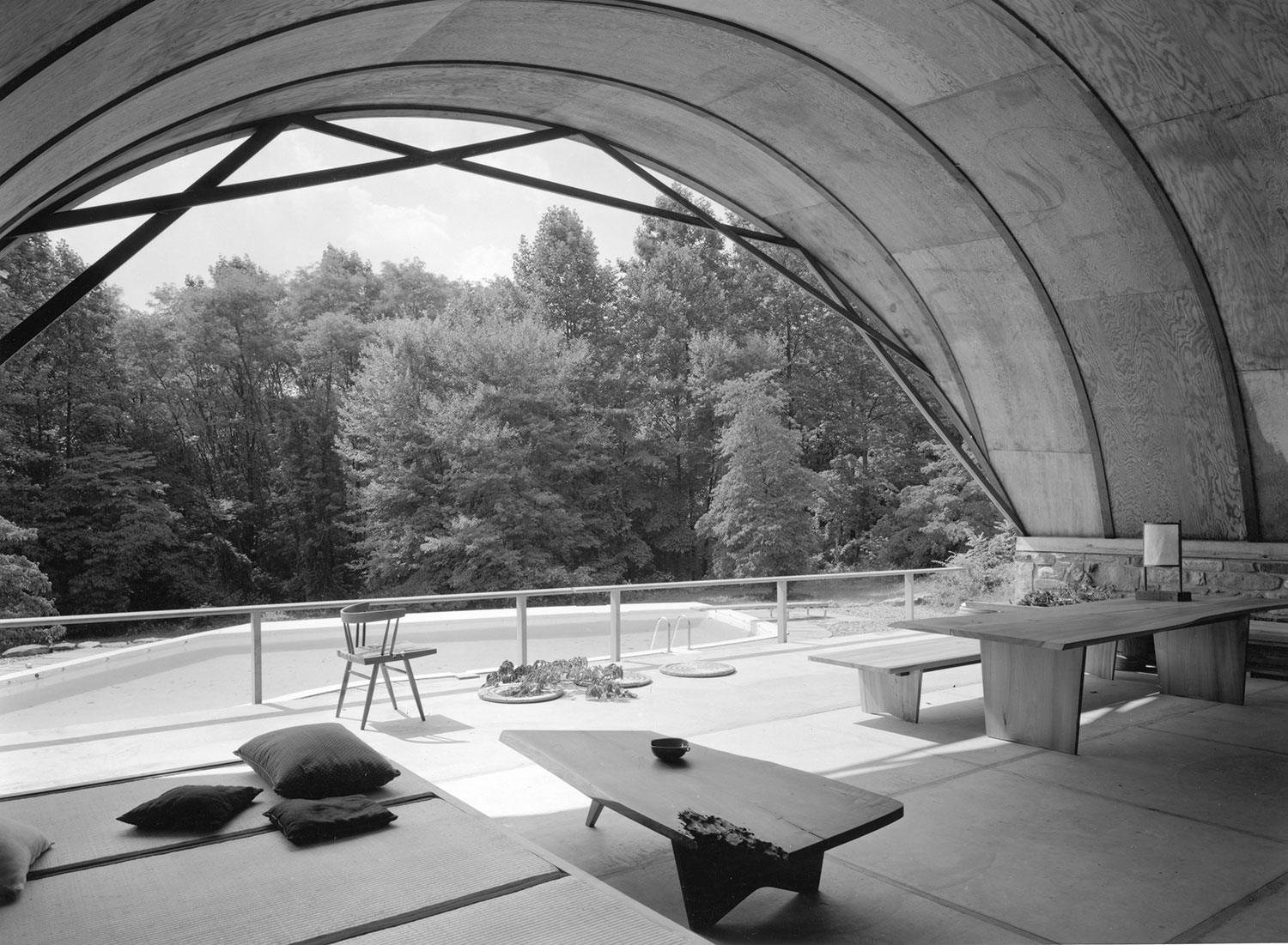
Pool House © Georges Nakashima
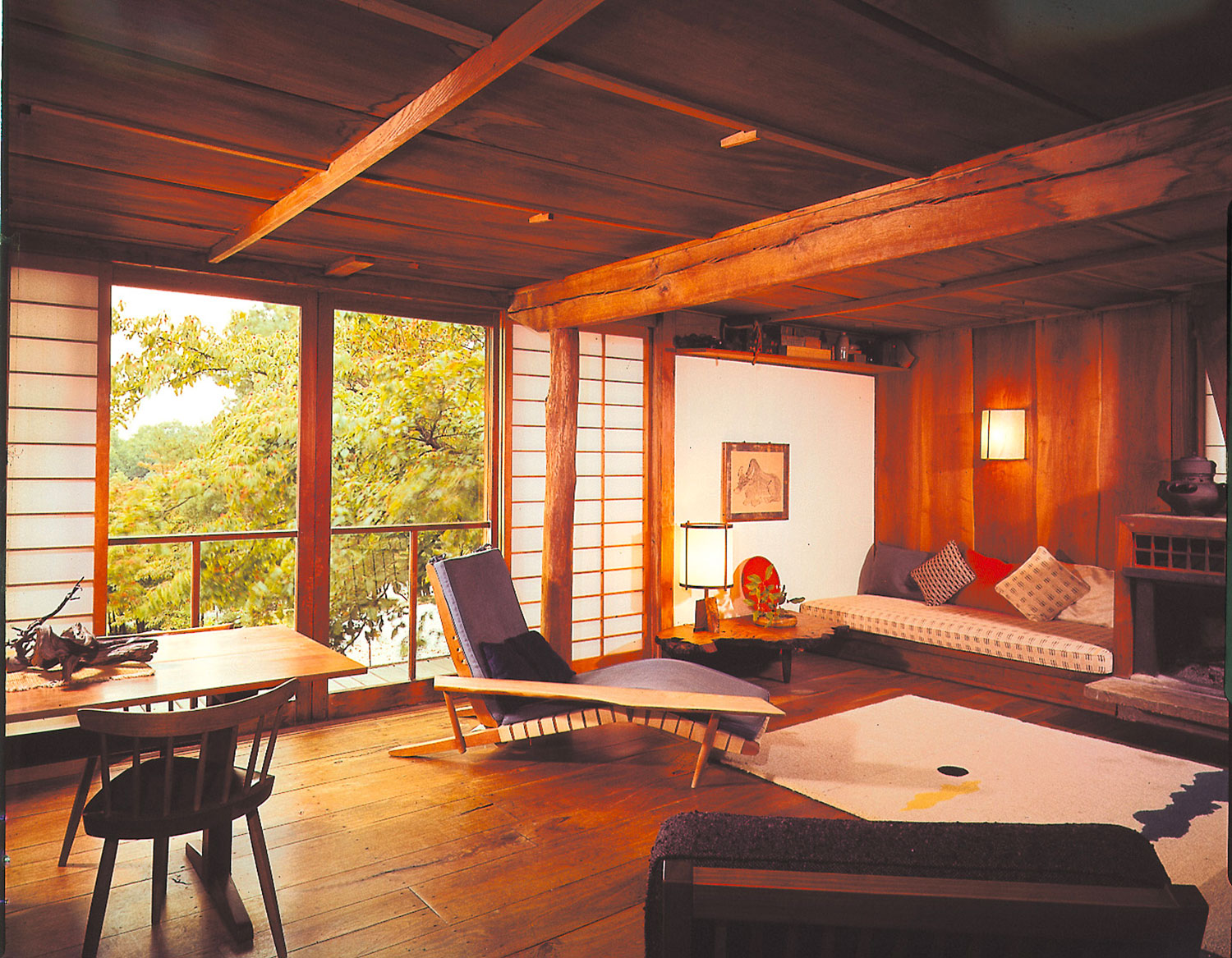
Living Room © Georges Nakashima
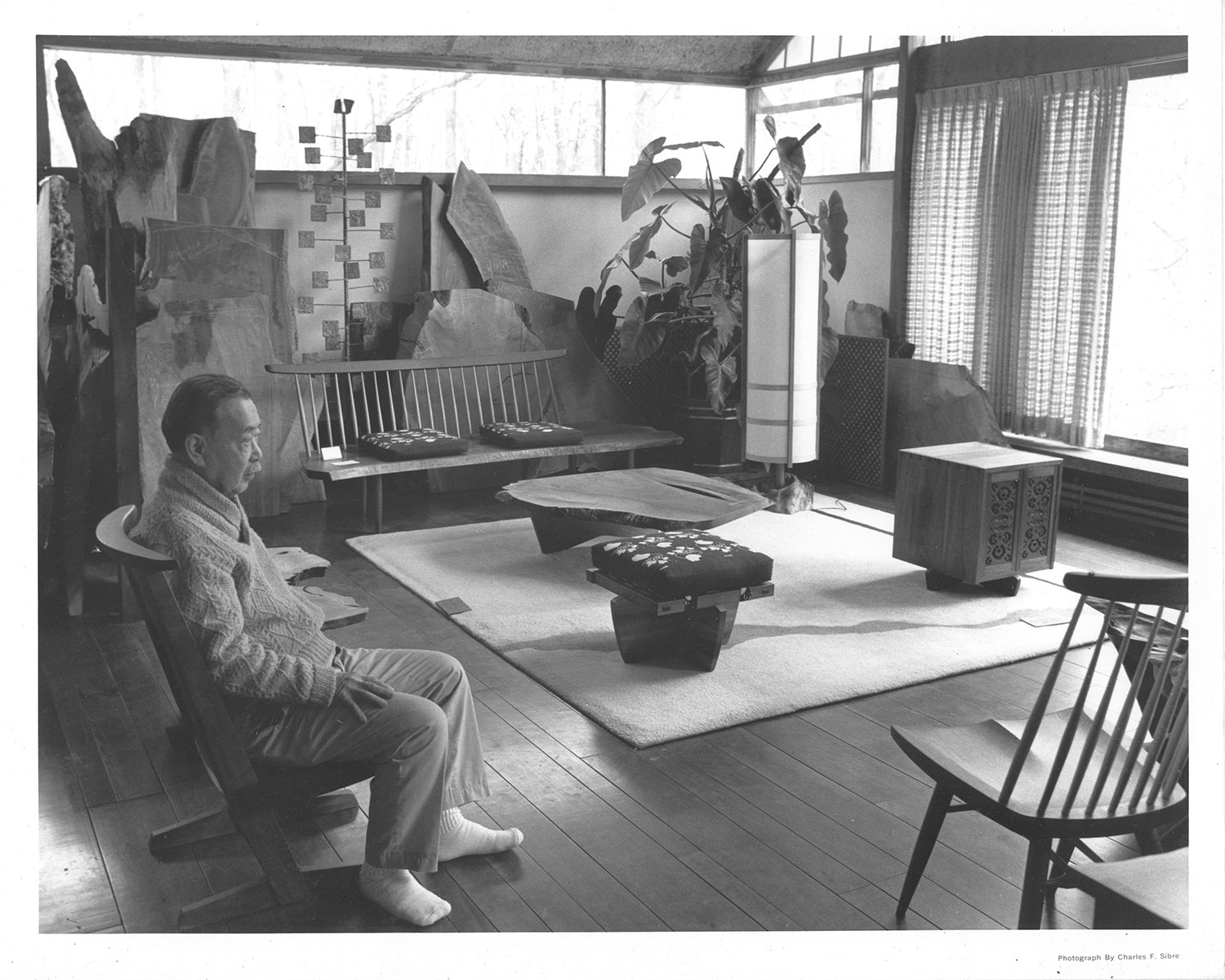
George Nakashima in the Conoid Studio © George Nakashima
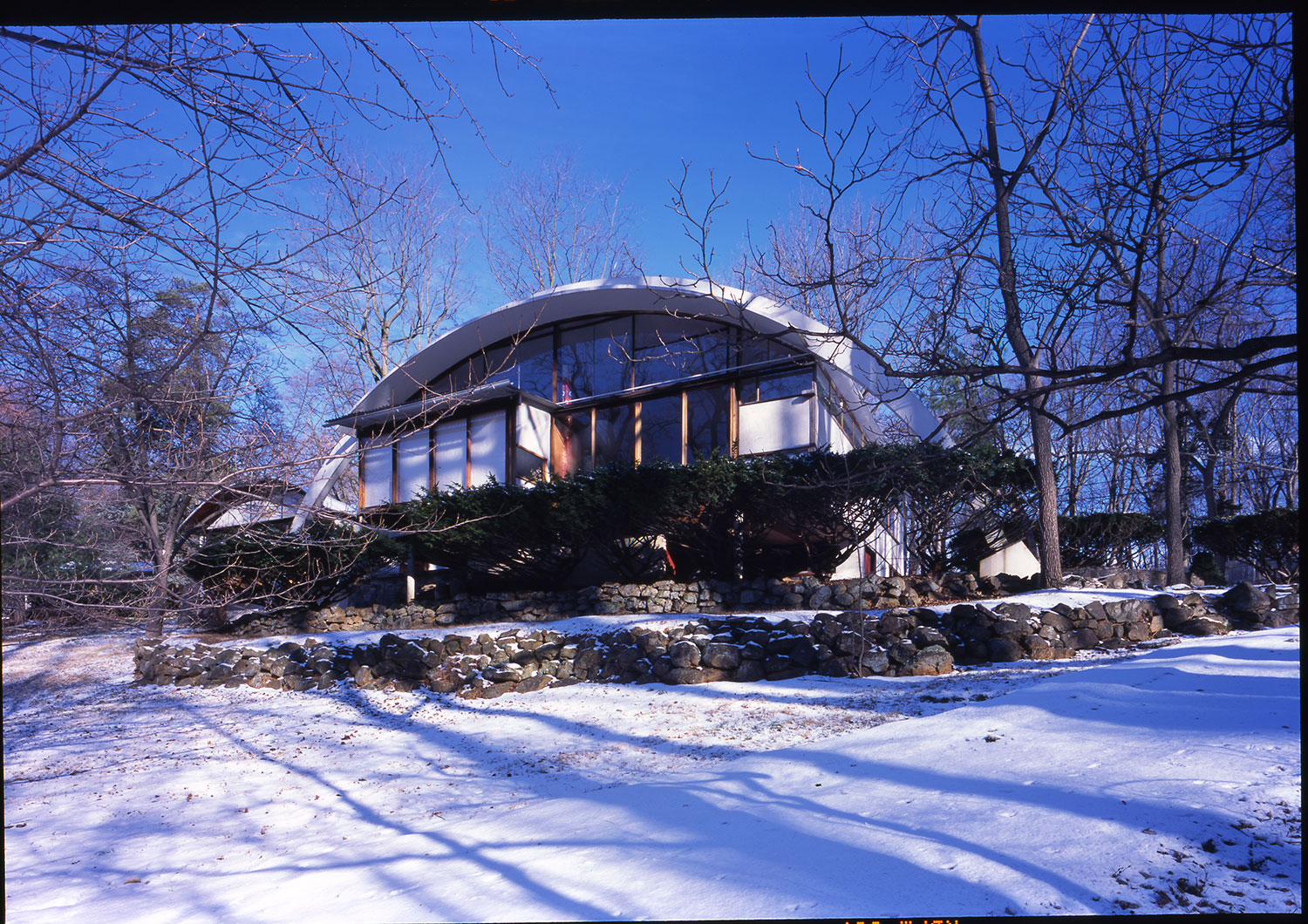
© George Nakashima
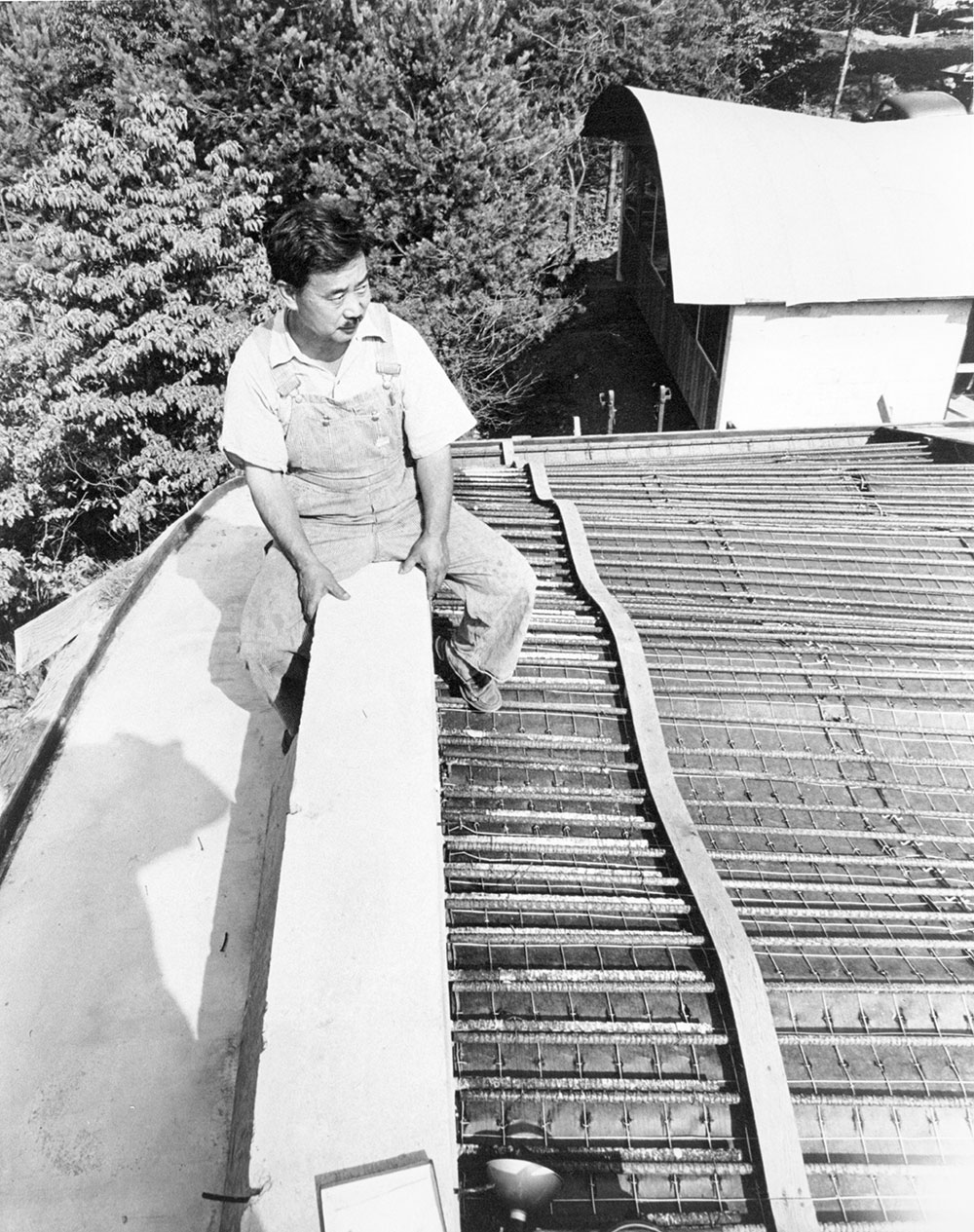
© George Nakashima
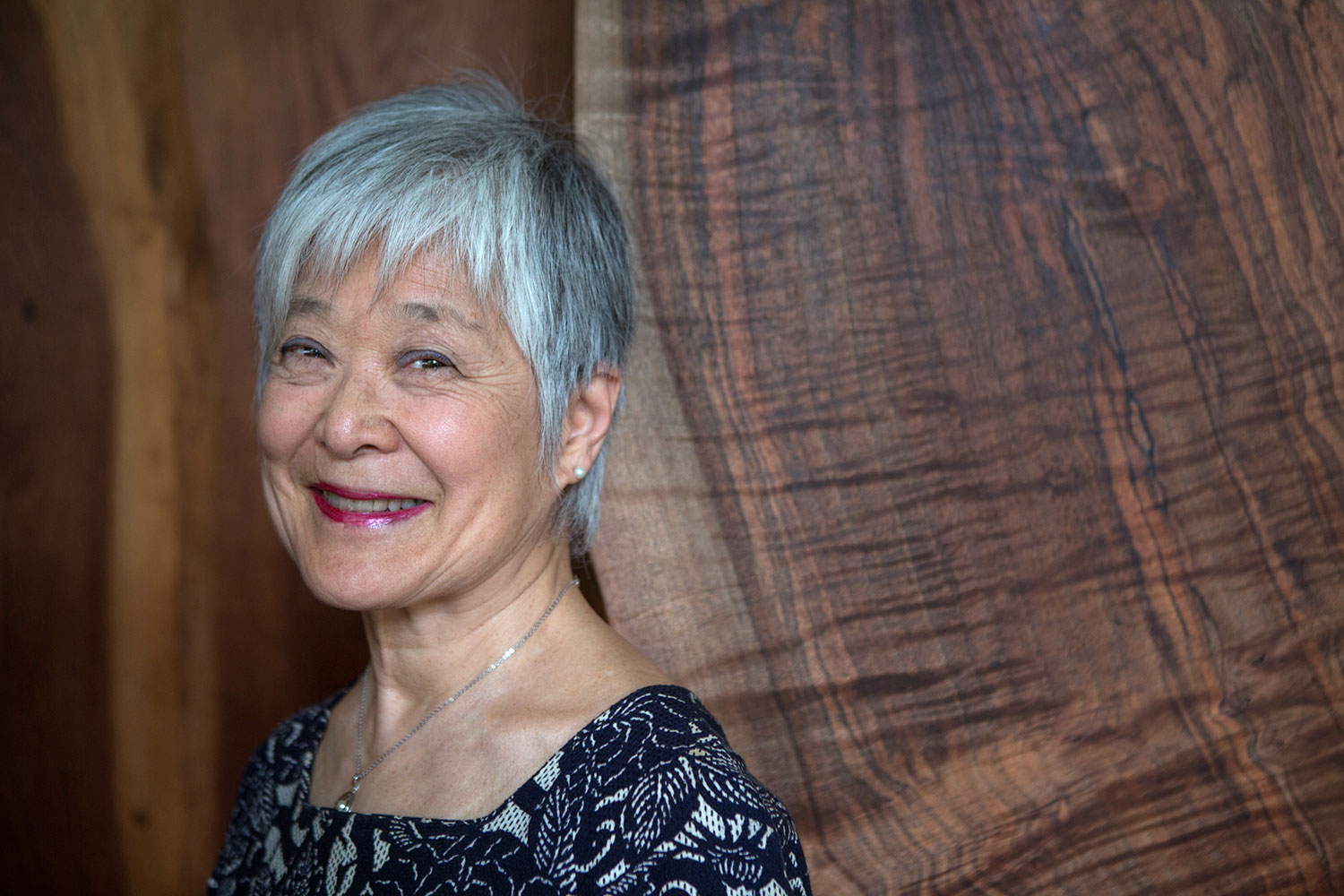
Mira Nakashima © Woong Chul An
TRENDING
-
The Tattoos that Marked the Criminals of the Edo Period
Traditional tattoos were strong signifiers; murderers had head tattoos, while theft might result in an arm tattoo.

-
Paris, Tokyo: Robert Compagnon
With his co-chef and talented wife, Jessica Yang, Robert Compagnon opened one of the top new restaurants in Paris: Le Rigmarole.
 3:31
3:31 -
Chiharu Shiota, Red Threads of the Soul
Last year, more than 660,000 people visited the retrospective 'Chiharu Shiota: The Soul Trembles' exhibit at the Mori Art Museum.

-
‘Before Doubting Others, Doubt Yourself. Who Can Truly Say a Dish Isn’t What It Used to Be?’
In ‘A Non-Conformist’s Guide to Surviving Society’, author Satoshi Ogawa shares his strategies for navigating everyday life.

-
The Story of Sada Yacco, the Geisha who Bewitched Europe
Described by Dazed magazine as the first beauty influencer, she has been restored to her former glory since 2019.





